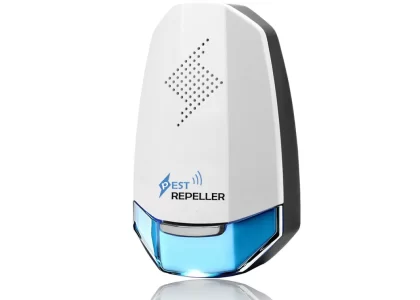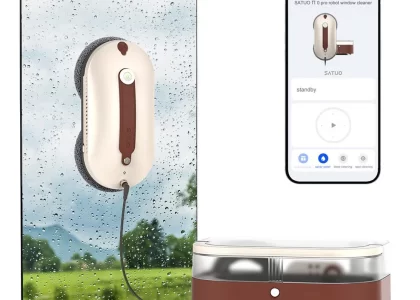 Introduction:
Introduction:
Installing a washing machine may seem like a daunting task, but with proper guidance and preparation, it can be a straightforward process. Whether you’re setting up a new washing machine or replacing an old one, it’s important to ensure proper installation to avoid leaks, electrical hazards, or other issues. In this comprehensive guide, we will explore step-by-step instructions and considerations for installing a washing machine. By understanding these aspects, you can confidently install your washing machine and enjoy its benefits without unnecessary hassle or risks.
 Several types of washing machines:
Several types of washing machines:
There are several types of washing machines available on the market. Here are some common types:
Top-Load Washing Machine:
This type of washing machine has a vertical drum and a hinged lid on the top. Clothes are loaded and unloaded from the top. Top-load washers are generally more affordable and have faster wash cycles compared to front-load washers. They are also easier to load and unload, as you don’t have to bend over.
Front-Load Washing Machine:
Front-load washers have a horizontal drum that is loaded from the front. Clothes are tumbled and washed inside the drum. These washers are known for their energy efficiency, water-saving capabilities, and gentler wash cycles that are suitable for delicate fabrics. Additionally, front-load washers can usually stack with a matching dryer, making them suitable for smaller laundry spaces.
High-Efficiency (HE) Washing Machine:
High-efficiency washers can be either top-load or front-load machines. They are designed to use less water and energy compared to conventional washers. High-efficiency washers use specialized detergents that produce fewer suds, allowing for more effective cleaning with less water. These machines are known for their energy efficiency and higher cleaning performance.
Compact Washing Machine:
Compact washers are smaller in size and designed for apartments, RVs, or smaller laundry rooms. They are available in both top-load and front-load configurations and often have a reduced capacity compared to standard-sized machines. Compact washers are a great option for those with limited space or smaller laundry loads.
Portable Washing Machine:
Portable washers are smaller, lightweight, and designed to be easily moved. They are typically top-load machines that can be connected to a faucet for water supply. Portable washers are ideal for people who need a washing machine in temporary living situations or for washing small loads.
These are some of the common types of washing machines available. When selecting a type, consider factors such as the size of your laundry area, the capacity needed, energy efficiency, and budget. It’s important to choose a washing machine that suits your specific needs and preferences.
Pre-Installation Preparations
Location Selection:
Choose a suitable location for your washing machine, ensuring it is close to a water source, drainage outlet, and electrical supply.
Consider factors such as floor stability, proximity to other appliances, and ease of access.
Measuring and Clearing the Space:
Measure the space available for the washing machine to ensure a proper fit.
Clear the installation area, removing any clutter, obstacles, or debris.
 Connecting Water Supply and Drainage
Connecting Water Supply and Drainage
Water Supply Connection:
Connect the water supply hoses to the back of the washing machine.
Identify hot and cold-water valves and securely attach the corresponding hoses to the appropriate valves.
Drainage Outlet Connection:
Locate the drainage outlet and ensure it is properly connected to the washing machine’s drainage hose.
Position the drainage hose either directly into a floor drain or connect it to a standpipe or laundry sink.
Electrical Connection
Power Source Preparations:
Locate the nearest electrical outlet that matches the voltage and amperage requirements specified by the manufacturer.
Ensure the outlet is grounded by using a three-pronged power cord, and verify the circuit breaker is compatible with the washing machine’s energy usage.
Electrical Connection:
Plug the washing machine’s power cord into the grounded electrical outlet.
Confirm that the connection is secure and that there are no exposed wires or loose connections.
Leveling and Stabilizing the Machine
Adjusting the Level:
Use a leveling tool or a bubble level to ensure your washing machine is level.
Adjust the machine’s leveling feet or use shims as necessary to achieve a balanced position.
Stabilizing the Machine:
Once the washing machine is level, secure it in place by tightening the locking nuts or bolts on the leveling feet.
This helps prevent unnecessary movement and reduces vibration during operation.
First-Time Use and Precautions
Testing for Leakage:
Before using the washing machine, run a water fill and drain cycle to check for any leaks.
Monitor the connections and hoses closely and tighten or adjust them if necessary.
Manufacturer’s Instructions:
Follow the manufacturer’s specific instructions for your washing machine regarding usage, load capacities, and any additional settings or features.
Regular Maintenance and Cleaning:
Implement regular maintenance and cleaning routines to keep your washing machine in optimal condition.
Periodically clean the detergent dispenser, drain filter, and drum to prevent buildup and ensure proper functioning.
 General trends that have been observed in the washing machine industry:
General trends that have been observed in the washing machine industry:
Energy Efficiency:
Energy efficiency has become a key consideration for consumers when purchasing washing machines. Energy-efficient models use less water and electricity, which not only helps reduce utility bills but also reduces environmental impact.
Smart Technology:
The integration of smart technology in washing machines has gained popularity. Smart features include Wi-Fi connectivity, remote control operation, smartphone compatibility, and the ability to monitor and control the machine remotely. This allows users to manage their laundry more conveniently and efficiently.
Larger Capacities:
Demand for washing machines with larger capacities has increased, as larger drums mean more clothes can be washed in a single cycle. This trend is particularly evident in families with larger laundry loads or individuals looking to reduce the number of wash cycles.
Quick and Eco-Friendly Wash Cycles:
Consumers are increasingly looking for washing machines that offer shorter wash cycles, allowing for quicker turnaround times. Additionally, eco-friendly wash cycles that utilize less water and energy are also gaining popularity as they align with sustainability efforts.
Quiet Operation:
Noise reduction is another trend in washing machines. Manufacturers are investing in designing machines with quieter operation, reducing noise levels during the wash and spin cycles. This is particularly beneficial for open-concept living spaces or for those who prefer quieter appliances.
Aesthetics and Design:
The design and aesthetics of washing machines have also become more important to consumers. Manufacturers are focusing on creating sleek and stylish designs that complement the overall look of modern homes. Metallic finishes, color customization options, and touch control panels are some popular design elements.
It’s important to note that these trends can vary by region, market segment, and individual preferences. When choosing a washing machine, consider factors such as your specific needs, available features, energy efficiency ratings, and budget. Make sure to research and read customer reviews to find a machine that suits your requirements.
 Conclusion:
Conclusion:
Installing a washing machine does not have to be a daunting task. By following the step-by-step instructions and considerations outlined in this comprehensive guide, you can confidently install your washing machine and enjoy its benefits. From pre-installation preparations to connecting water supply and drainage, electrical connection, leveling, and stabilizing the machine, each step contributes to a successful installation. Remember to test for leaks, carefully follow the manufacturer’s instructions, and maintain your washing machine regularly. Let this comprehensive guide be a valuable resource in your endeavor to install a washing machine, ensuring effective usage and prolonging the lifespan of your appliance.





